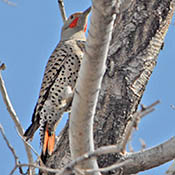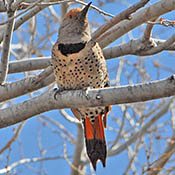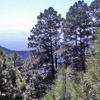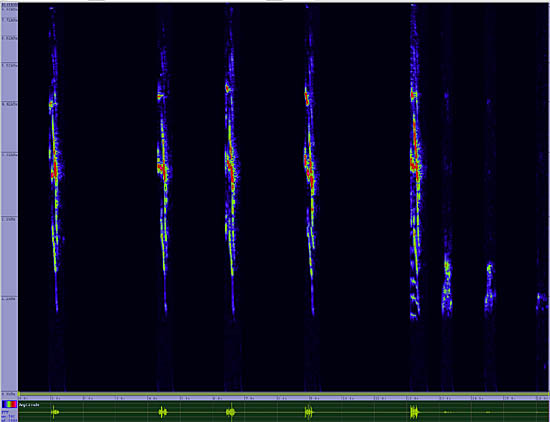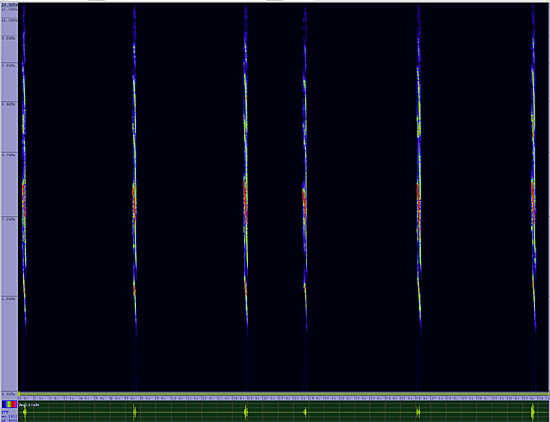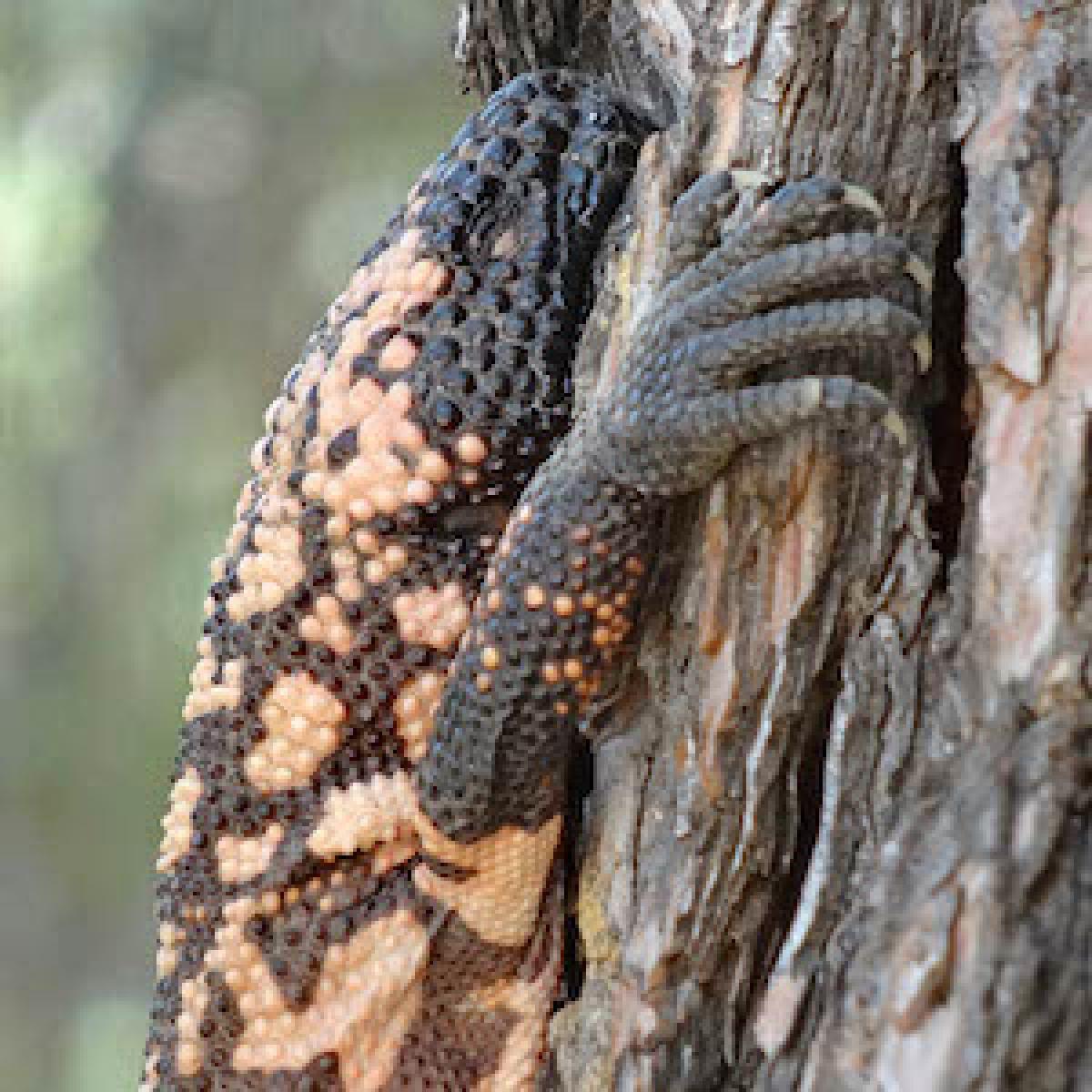Northern Flicker
Colaptes auratus

Tree Clinging
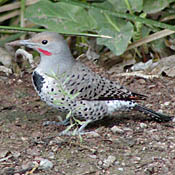
Length: 13 in. (32 cm )
This large and common woodpecker rarely uses trees for feeding like respectable woodpeckers. Instead it spends almost all its feeding time on the ground where it specializes on eating ants. During the winter, however, it will also consume nuts, grain and seeds. It is noisy and uses its long and durable bill to make loud drumming sounds on hollow branches, lampposts, and metal roofs. The Northern Flicker uses a wide range of holes and cavities in which to make its nest - including snags, telephone poles, houses, haystacks and nest boxes. They even have been known to steal river bank nest holes from kingfishers and bank swallows.
The four-digit banding code is RSFL.
Bibliographic details:
- Article: Northern Flicker
- Author(s): Dr. Biology
- Publisher: Arizona State University School of Life Sciences Ask A Biologist
- Site name: ASU - Ask A Biologist
- Date published: 13 Jul, 2017
- Date accessed:
- Link: https://askabiologist.asu.edu/activities/bird/northern-flicker
APA Style
Dr. Biology. (Thu, 07/13/2017 - 15:37). Northern Flicker. ASU - Ask A Biologist. Retrieved from https://askabiologist.asu.edu/activities/bird/northern-flicker
Chicago Manual of Style
Dr. Biology. "Northern Flicker". ASU - Ask A Biologist. 13 Jul 2017. https://askabiologist.asu.edu/activities/bird/northern-flicker
Dr. Biology. "Northern Flicker". ASU - Ask A Biologist. 13 Jul 2017. ASU - Ask A Biologist, Web. https://askabiologist.asu.edu/activities/bird/northern-flicker
MLA 2017 Style
Be Part of
Ask A Biologist
By volunteering, or simply sending us feedback on the site. Scientists, teachers, writers, illustrators, and translators are all important to the program. If you are interested in helping with the website we have a Volunteers page to get the process started.


